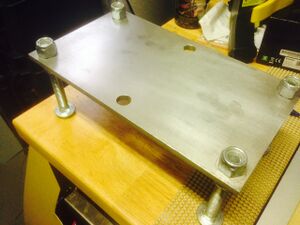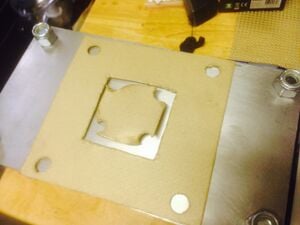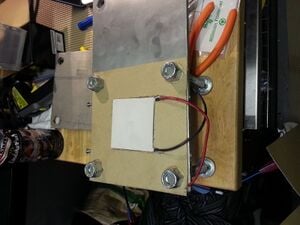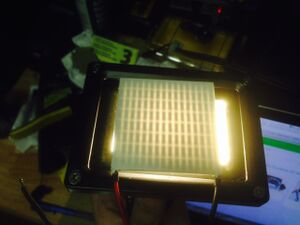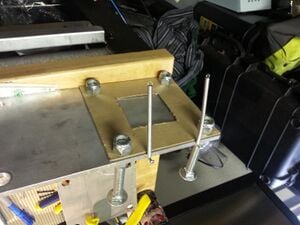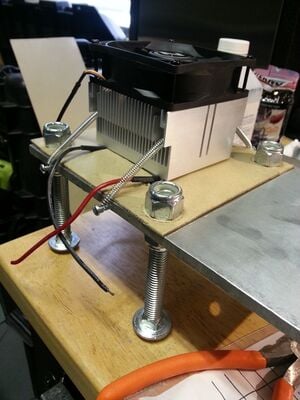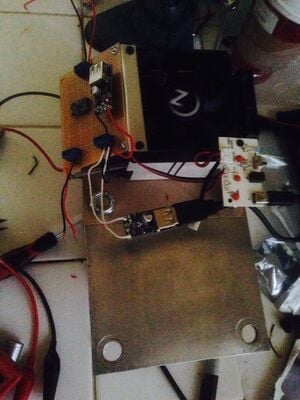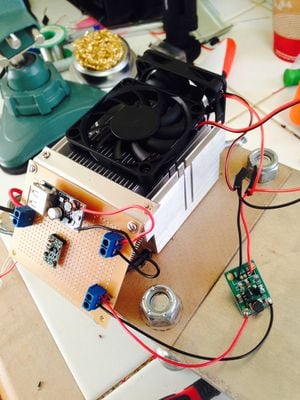
Parts[edit | edit source]

• 4 in. X 12 in. piece of aluminum (1/4 in. thick)
• TEG module
• Step up voltage converter (MAX756EPA+(joule thief) – 5VDC from 0.7 volts in
• 12 V fan (too much, need a 5V)
• Parallel board
• Solder
• Sterno
• Thermal Paste
• Fan
• Heat sink
• Car exhaust gasket
• (2) springs (size 16)
How to Build[edit | edit source]
Gather your needed parts and supplies. Also you will need these tools. Tools Used: Socket set, Sawhorses, Hacksaw (or equivalent), Hammer, Adjustable wrenches, Hex key wrenches, Pliers, Clamps, Drill and bits, Grinder ( or equivalent), Wire stripper, soldering iron cont...
Costs[edit | edit source]
| Material | Cost ($) | Quantity | Total ($) |
|---|---|---|---|
| TEG Module | 49.95 | 1 | 49.95 |
| Aluminum Base Plate | 6.00 | 1 | 6.00 |
| Heat Sink and Fan | 10.00 | 1 | 10.00 |
|
springs |
0.99 | 2 | 1.98 |
| Exhaust Gasket | 12.95 | 1 | 12.95 |
| Screws | 0.20 | 1 | 0.80 |
| Sterno | 7.00 | 1 | 7.00 |
| Thermal Paste | 5.00 | 1 | 5.00 |
| DC/DC Converter | 9.95 | 1 | 9.95 |
| Step up voltage converter | 7.00 | 1 | 7.00 |
| TOTAL COST | 110.63 | ||
Conclusions[edit | edit source]
We installed a circuit board with the positive and negative terminals from the TEG module powering the step up converter and the fan. We installed another terminal that went to the USB port for cell phone charging. This was too much for the systems power so the fan didn’t work while we were charging the phone. This is a problem since optimum performance is based on a hot and cold side. Our initial tests were however a success and we started charging a cell phone at 0.67V. We decided to hook up the 5V fan we appropriated from another device and it seems to work fine. With the 5V fan we were able to get over 1.3V of electricity using sterno instead of candles. This kept a cell phone charging for a few minutes after we removed the heat. With more testing and a better heat gauge we are hoping to increase this up to 5V and use a step up converter for 5V to 12V.
